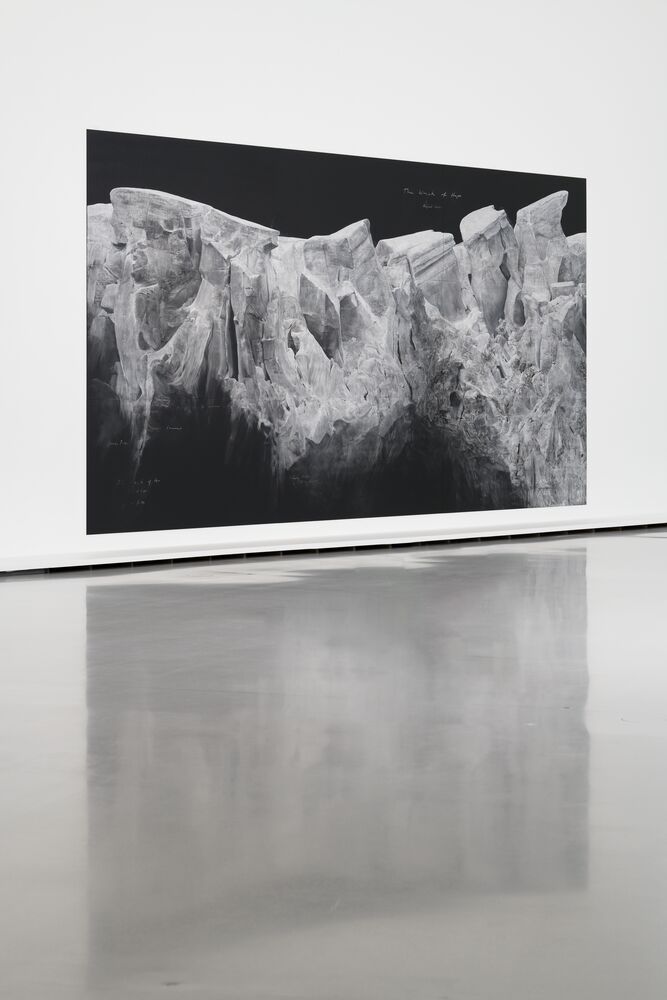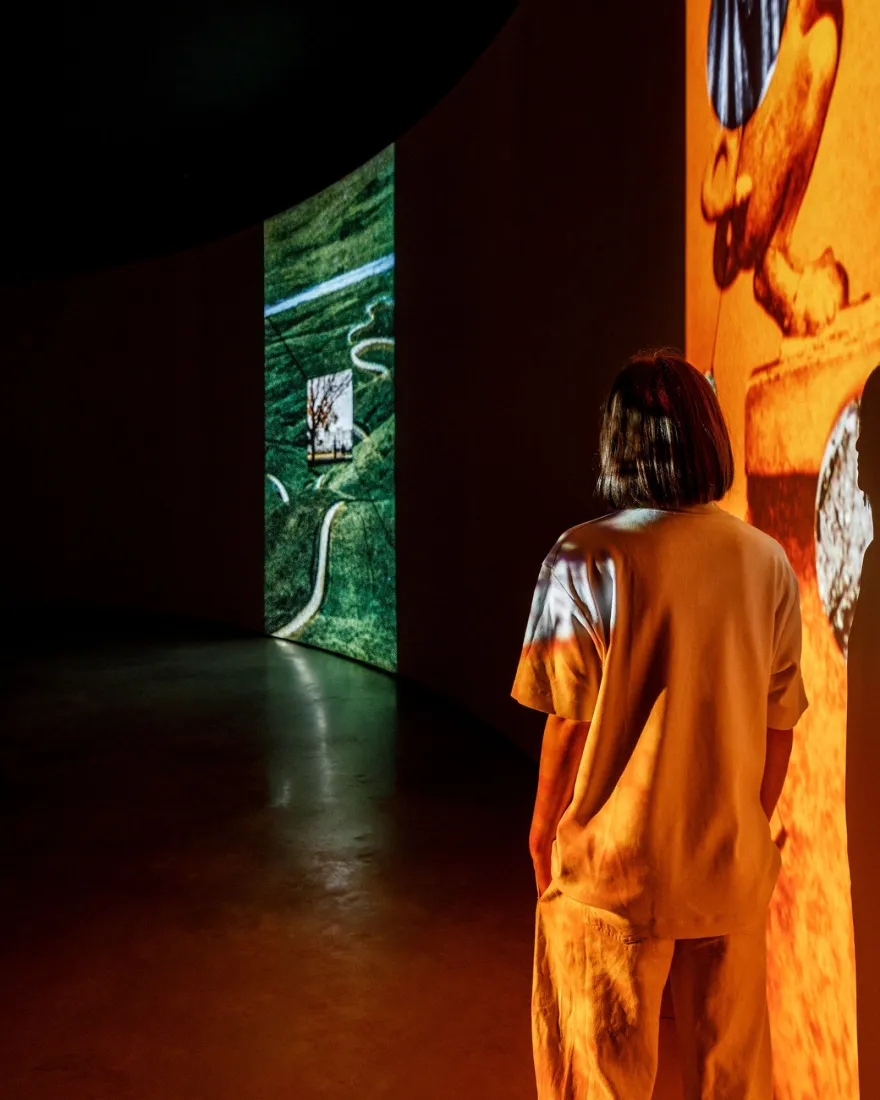Tacita Dean

In the Rotunda and Gallery 2.
For “Before the Storm”,Tacita Dean brought her sense of poetic atmosphere to the curves of the building’s architecture. Make way for geological time and dystopic landscapes, for glaciers inspired by Caspar David Friedrich’s Sea of Ice, which invites its viewers to drift away, for the choreographed flow of time and disorientation, for the sakura, the thousand-year-old cherry trees that have for centuries adorned themselves at the close of winter with their ephemeral blossoms, and for the trembling landscapes that register and record the seismic advent of new political boundaries within the folds of their topography. For Tacita Dean, the giants of nature express their paradoxical fragility through the obsolescence of the materials of which they are made: chalk, film, watercolour. Tacita Dean shows elements that are in the process of disappearing and about to become, a series of memento mori of the here and now that yield, before the storm, to a “nostalgia for the season that has just left us” (Ryoko Sekiguchi, Nagori. La nostalgie de la saison qui vient de nous quitter (Paris, Gallimard, 2020) what the Japanese call nagori.
Like a map of a domesticated world shown under the glass dome, Tacita Dean cultivates her “attraction for the limits of the Earth—the desert, like the sea, the ice stretching to the end of the world, where the volcano springs from the ocean. In such places, you are not bound by the laws of human time, you can be free of that history that cannot emerge in constant flux, like that of the sea or dunes sliding into the desert, in the mist of meteorological conditions and liminality. In such places, you can imagine the millennia; imagine prehistory and see the future”.2 She has created a concave pavilion within the concrete rotunda, an intangible, almost lunar territory that, like a movie camera lens, captures the light and reflection of the images that populate the vast marouflage canvas above. It hosts an infinite choreography in which film stock from her Super 8 films, which sketch out an autobiographical map of her travels across the globe, are embedded in postcards from her personal collection. These miniature landscapes respond soberly to the immensity of the painting in the Rotunda. Tacita Dean responds to its underlying visions of commercial and colonial expansion with an intimist, sensitive geography of dreams, otherness, and desires for new horizons. The filmic hybridity of these images, which combine these nineteenth century postcards and these films from the beginning of her career that she has reshot on 35mm, gives new life to these distant timeframes, to the quasi-surrealist fertilisation of imagination, of lived experience captured and recorded on film, and of the life that forms through the deepest contemplation of nature and art.
Tacita Dean
As an artist who works with the notions of time and memory, Tacita Dean (born in 1965 in the United Kingdom) summons historical and fictional narratives in her drawings, analogue photographs, and 16mm films, which make a full break with any traditional, academic approach. By making these older media her preferred tools for research into memory, she is also reflecting on the very nature of analogue media and on the challenge of their conservation. Known mainly for her films of a contemplative atmosphere, often filmed as a sequence shot, Tacita Dean’s oeuvre is a veritable homage to slowness. In the 1990s, she moved away from commented films to making discrete soundtracks that further intensify the minimalism of her narration. Viewing landscape as a question of time passing is a constant of her work.
Tacita Dean’s works held in the Pinault Collection were first shown at the Punta della Dogana as part of the exhibition “Accrochage”. Retrospectives of her work have been held at the Australian Centre for Contemporary Art in Melbourne (2009), DIA: Beacon, New York (2008), and the Guggenheim Museum (2007).
